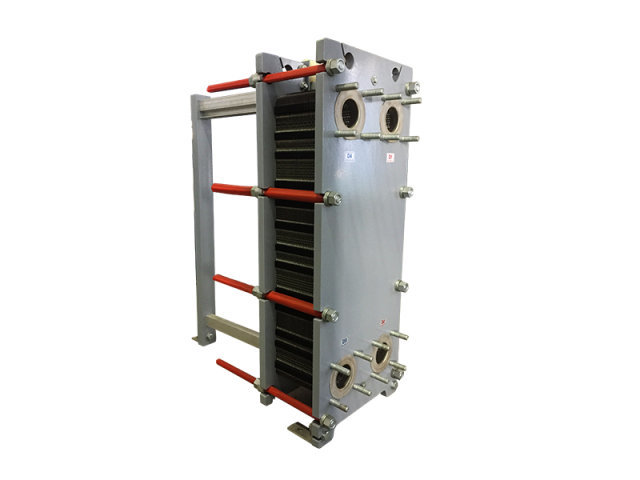


Semi-Welded Heat Exchangers Using Laser Welding Technology
Semi-welded heat exchangers are composed of plate boxes, with each box formed by laser-welding two plates together. This structure creates a welded seal on one side and a gasket seal on the other side, eliminating the risk of corrosion on the sealing gaskets.
Laser Semi-Welded Plate Heat Exchanger
The laser semi-welded plate heat exchanger consists of alternating welded channels and conventional flow channels. Two plates are welded together, flipped 180 degrees to form a plate assembly, creating welded channels. Seal gaskets are used between each plate assembly, forming detachable conventional flow channels. Sensitive media flow through the welded channels, while regular media pass through the conventional channels for heat exchange.
Laser semi-welded plate heat exchangers are particularly suitable for the evaporation and condensation of refrigerants such as ammonia and fluorine. They are also ideal for heat exchange in chemical and general industrial processes where the media may cause corrosion of gaskets.
Unique Flow Channel Design
The unique flow channel design increases turbulence intensity as the media passes through the plate heat exchanger, enhancing heat transfer efficiency and reducing corresponding pressure losses. High heat transfer efficiency can be achieved even at low flow rates within the exchanger, and we offer a variety of plate types to meet different operational requirements.
Non-Adhesive Gasket Design—Longer Lasting Seals
Chloroprene rubber gaskets are highly corrosion-resistant, making them the material of choice for laser semi-welded plate heat exchangers. The non-adhesive system places gaskets in specially designed grooves, minimizing contact area with the media and extending their lifespan. These gaskets are easy to clean and have excellent resistance to heat stress.
In cases where harmful reactions occur due to mixing of hot and cold media in the heat exchanger, double-wall safety plate heat exchangers are used. These double-wall safety plate heat exchangers find widespread applications in industries such as food, pharmaceuticals, municipal water supply, metallurgy, power, and chemical engineering.
Double-Wall Safety Plate Heat Exchangers
The working principle of double-wall safety plate heat exchangers is similar to that of regular plate heat exchangers. The key difference lies in each heat transfer unit being made of two plates that are welded together and tightly pressed to minimize thermal resistance. Laser welding is used to create four corner holes, forming a heat transfer unit equivalent to one plate in a typical removable heat exchanger. When cracks or perforations occur in the plates, any fluid leakage on one side will flow out through the gaps between the plate assemblies. The leaking fluid on either side remains under positive pressure, ensuring the absolute safety of the other side’s media.
